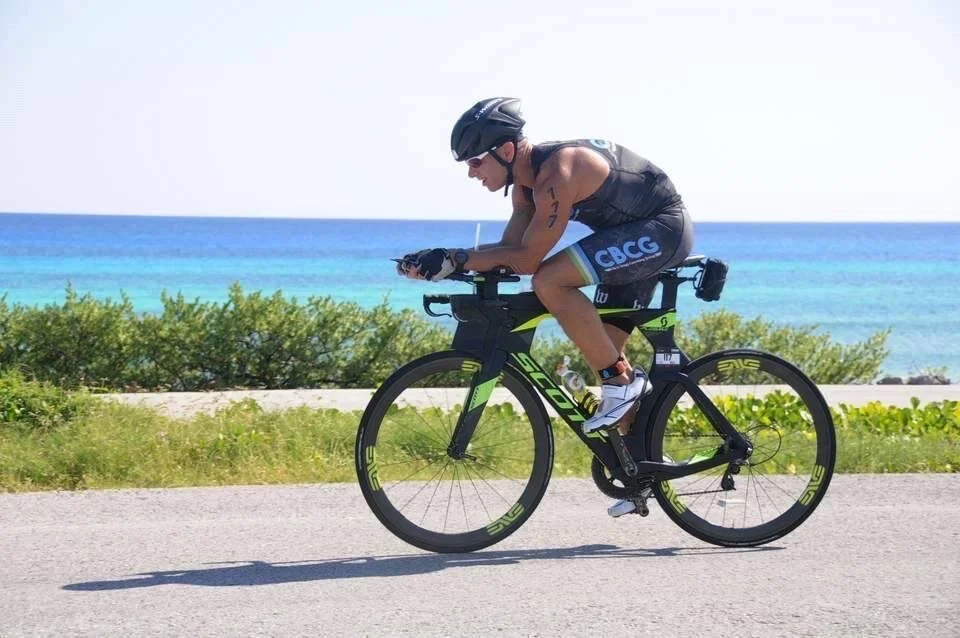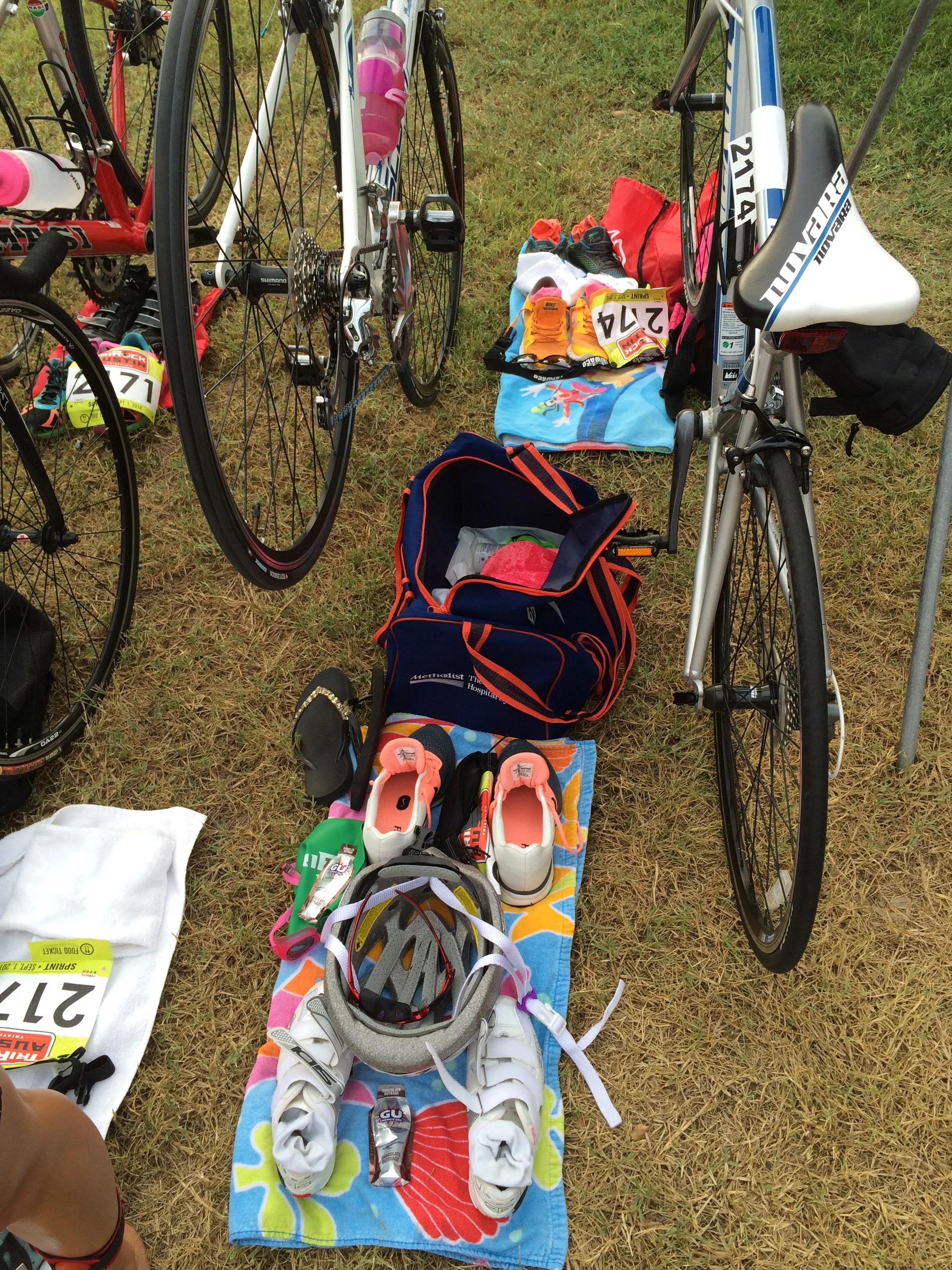Your 12-Week Sprint Triathlon Training Plan
by Molly Balfe
Ed. Note—Campfire Head Coach Molly Balfe checks in with thoughts as to how to prepare for your first sprint-distance triathlon. The former president of Tri Team PDX, coach for Team in Training, and co-founder of Campfire Endurance Coaching checks in with both a complete 12-week plan for your first triathlon, AND a complete, free guide to the process, which you can download from our website here.
So you’ve just signed up for your first triathlon!
Whether you were reluctantly roped-in by a spandex-clad friend, or the feat has always been on your bucket list, we, the Campfire coaches, would like to congratulate you on deciding to try your first triathlon. Unlike stepping into a simple running race, tris take an exceptional deal of courage, likely testing your comfort zones in at least one of the disciplines, and this plan will help you along your way. So here is some expert guidance that our Campfire athletes have valued while preparing for their first races.
Approaching your first triathlon with a smile is always the best approach
Necessary Gear
If you’ve begun to gather information for your first tri, you’ve encountered a seemingly endless array of toys and tools you can spend your money on. The fastest and lightest gear may help you at certain points in your triathlon career, but we recommend starting out with the basics. That way, if you conclude that triathletes are nuts, you didn’t waste your comic; but conversely, if you find you‘re up for more triathlon adventures, you can slowly fill your gear closet as needed, with smart gear appropriate for you. That stated, a few pieces of equipment are necessary to train for and complete your first race:
Bike – Repeat after us: “I do not need to buy a race bike for my first triathlon.” Pretty much any bike with working gears and brakes will get you through your first sprint. If you already own a mountain bike, hybrid, or entry-level road bike, that will work! True, a heavier bike may slow you down a bit, but you’ll have the chance to experience your first race and see if you want to invest something more sport-specific.
Helmet – This one’s a non-negotiable. All bicycle training and racing should be done wearing a CPSC approved helmet. Same thing as above applies, though: it would be total overkill to invest in a race-specific “aero helmet” for your first one.
Running shoes – Want to know which running shoes are the best? Guess what: it totally depends. Campfire coaches highly recommend you visit your local running store to have someone help you select a shoe that works for your specific stride and biomechanics. Fashionable fitness shoes may look rad, and deals on online warehouses can be a steal, but they might not protect you from injuries. You’ve likely been running already, so you shouldn’t make any major changes in terms of going minimal or more structured. In fact, the only major change you should make is considering quick-draw laces. Invest in a pair of running shoes, and break them in a bit before your race.
Swimsuit, cap, and goggles – Think about where you’ll be racing when you pick your goggles. If you’ll be in a pool, or a foggy or cloudy lake, get clear lenses. If you’ll be staring down the sun at dawn, go for something tinted. Try them on for at least the distance of your first race, and when in doubt, get something pretty.
Watch – While this one isn’t entirely necessary, a cheap running watch can make a big difference in your triathlon training. You don’t need bells and whistles, but a watch that can show total time elapsed (and ideally lap splits) comes in very handy. Many people use their smartphones for this function, but we believe it’s best to keep your smartphone technology far away from sweat.
Following the Plan
Campfire Endurance coaches have created a plan that contains two workouts per week in each discipline (swim, bike, and run) as well as one strength session. Check out the plan here, empowering yourself to perform your fastest, happiest, and healthiest first triathlon possible! Ideally, you will complete each workout as written. However, Campfire coaches understand that life can get in the way, so if you’re time-limited, focus on completing the two workouts for the sport you struggle with the most (do it!), and at least one workout each for the other two sports.
We also included a few “brick” workouts in this plan, instructing you to run right after you ride. “Bricks” should be considering key workouts: they’re a perfect time to practice your bike-to-run transition, and grow accustomed to how your legs feel right off the bike. These workouts are also great opportunities to practice your race day nutrition (more info on nutrition below).
If you need a day off, or you’re just feeling blasted, take a day off! If you’re unsure, we suggest at least attempting the workout to see if you just needed a warm up to blow out the cobwebs. If you start the main part of the workout and it’s just not happening, then call it quits.
The majority of these workouts will be at an easy effort, especially during the first 6 weeks of training. In order to safely build up your endurance, you need to gradually increase your training volume. Even if you feel good, keep the effort level low unless otherwise indicated.
Campfire Athlete Kirk L. on the race course
Nutrition for Training and Racing
Your diet makes a huge difference in how you feel during (and after) your workouts. It is important to pay attention to what you eat while training and what you eat during your regular life. A lot of newer triathletes make the mistake of training to eat, instead of eating to train. While a workout in this plan may feel difficult, it probably hasn’t created a caloric deficit that only an entire pizza can fill. Conversely, if you have been restricting your caloric intake, you may need to eat more to ensure that you are meeting the needs of an increased training load.
Perhaps most importantly, if you find yourself feeling depleted throughout the day, take a look at your total caloric intake to ensure that you are eating enough. Fueling with training and recovery in mind can help ensure that you enjoy your workouts and feel strong throughout your day. When in doubt, maintain a healthy diet focused on vegetables, lean proteins, and whole grains.
While training and racing, you’ll probably need to explore the sugary world of sports nutrition. For any workout over an hour, you should plan to take a bottle of sports drink to help replace calories and replenish sodium. You should also plan to practice using gels, chomps, or beans during a few of your longer runs, since they are what athletes typically use during races.
Your nutrition needs for the race itself should be relatively low (provided you aren’t dehydrated or under-fed at the start line). Plan to use a bottle of sports drink during the bike, and take sports drink at each aid station on the run. You can also take a gel or other 100-calorie snack towards the beginning of the run – many Campfire athletes including coach Molly prefer the type with added caffeine.
Campfire Endurance coach, and author of this blog and the training plan, Molly Balfe practicing good post-race nutrition
Preparing for Race Day
It is a good idea to familiarize yourself with USA Triathlon’s rules and regulations prior to your race, especially their most common violations.
On race day, plan to arrive early enough to set up your transition area. Transition is where you will rack your bike and transition from swim to bike and bike to run. You do not have much room for your equipment, so pack only what you will need during the race. For reference, here is a picture of a well-organized transition area:
An exceptionally, if not obsessively well-organized transition area
While it may seem obvious, make sure you know the layout of your race, including where you will enter and exit the water and where you will enter and leave the transition area for the bike and run legs. Knowing where you are headed will save you valuable time during your race.
A Final Word of Advice
Have fun! We love this sport, and we hope that you will love it too. Triathlon is an individualized sport, with a lot of potential hyperactivity and focus on expensive gear, so it can be easy to allow yourself to get caught up in the pressure, anxiety, and competition of training and racing, so remember that we do this for fun. Be generous with your gratitude and give copious high-fives. The more fun you allow yourself to have, the more likely it is that you will continue to come back to this sport for years to come. In fact, it’s been empirically determined that if you smile during a race, you will go faster. Happy training! Need the link to that plan again? You can grab it here. Want to talk to a coach? Reach out to us here. Thinking about your very first race but need some basic guidance? Consider the Athlete Accelerator.




